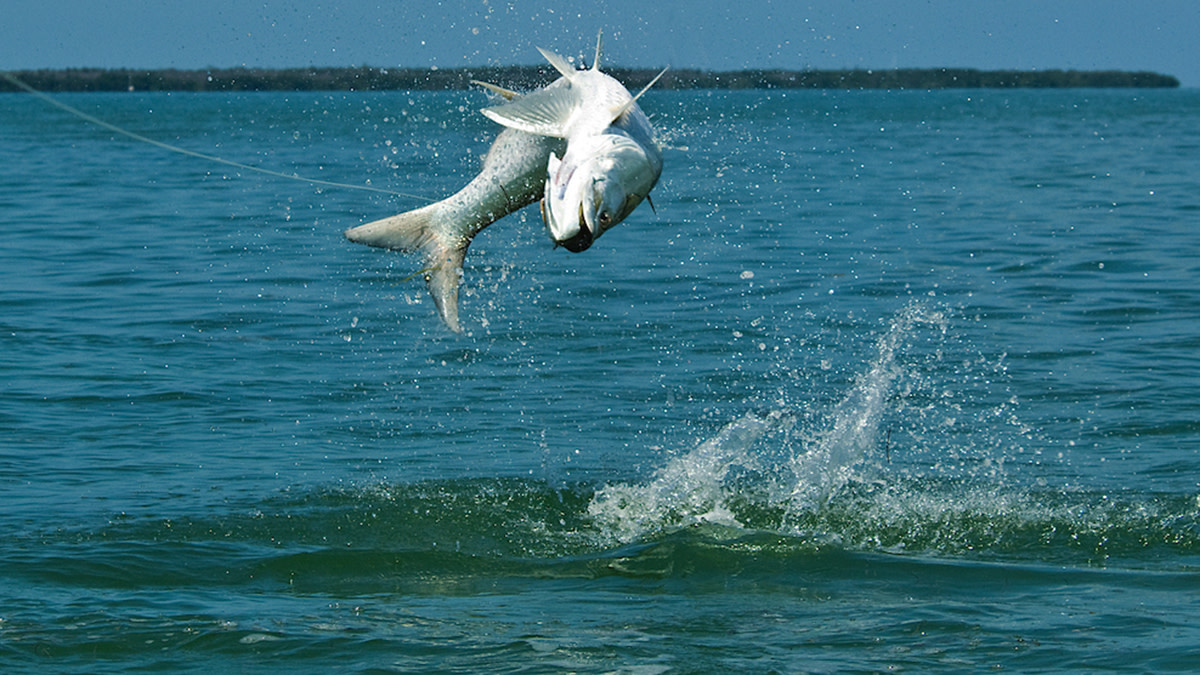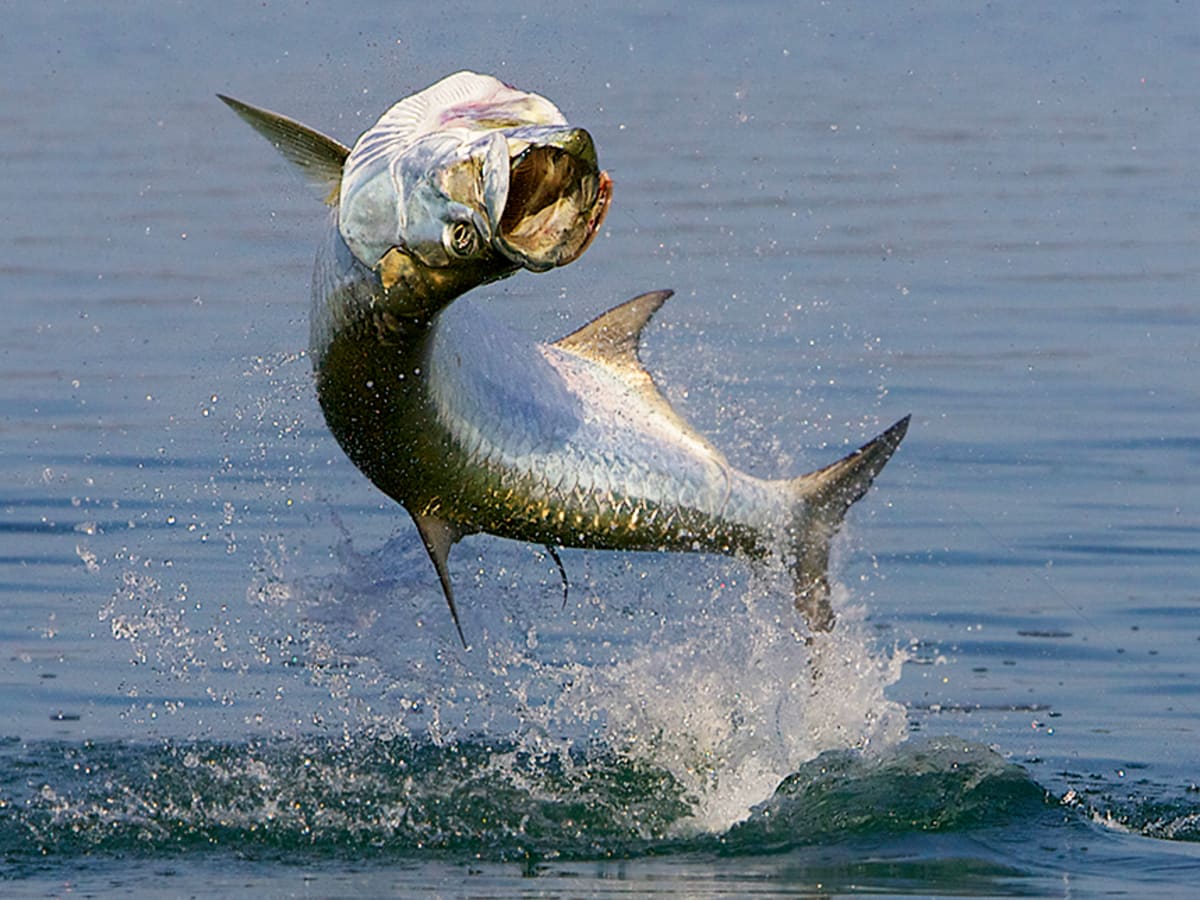Tarpon are primarily found in shallow coastal waters and estuaries, but they are also found in open marine waters, around coral reefs, and in some freshwater lakes and rivers. What are Ideal Water Conditions for Tarpon?
Ideal H2O Conditions for Tarpon:
- Warm water (75-88°F).
- Clear water for visibility
- Optimal Salinity levels (15-35 ppt)
- Presence of habitat features mangroves and coastal structures
- Strong tidal movement
- Moderate weather conditions
- Full moon phase when tarpon is more active
- Adaptability and observation skills
Tarpon can only be fished recreationally in Florida. The majority of recreational anglers practice catch and release since the fish is not considered to be of any food value. However, anglers can possess them for trophy purposes at the cost of $50.00 per tag, per fish. Without this tag, possession is illegal.
Introduction:
Tarpon fishing is an exhilarating sport that attracts anglers from around the world. Known as the “Silver King” due to their majestic appearance and powerful fighting abilities, tarpon offers a unique challenge for fishermen. These large, migratory fish are found in warm coastal waters, ranging from the Atlantic Ocean to the Gulf of Mexico and beyond. Tarpons are prized for their acrobatic leaps when hooked, often soaring several feet out of the water in an attempt to shake free.
Anglers pursue tarpon both from boats and from shore, using a variety of techniques such as live bait fishing, fly fishing, and lure fishing. The success of tarpon fishing hinges greatly on favorable water conditions. Water temperature, salinity levels, clarity, tidal movement, and weather all play pivotal roles in determining the whereabouts and behavior of tarpon. For instance, Tarpon are more active in warmer waters and tend to congregate in areas with suitable salinity levels and clarity for feeding. Tidal movement influences their movement patterns, with tarpon often favoring areas with strong currents where prey is more abundant.
Moreover, weather conditions can impact tarpon activity, with factors like wind, cloud cover, and barometric pressure affecting their feeding behavior. Understanding and adapting to these water conditions are essential for anglers seeking success in tarpon fishing endeavors.

What are Ideal Water Conditions for Tarpon
Ideal water conditions for tarpon fishing typically involve warm temperatures ranging from 75°F to 88°F, as tarpon are more active and responsive within this range. Clear water with good visibility allows tarpon to locate prey more easily and increases the effectiveness of fishing tactics such as sight fishing.
Tidal movement is essential, with tarpon often feeding more actively during incoming or outgoing tides when prey is concentrated. Moderate weather conditions, such as calm winds and overcast skies, can enhance tarpon activity and make for more productive fishing outings. Finally, maintaining healthy habitat conditions through conservation efforts is crucial for sustaining tarpon populations and ensuring their long-term viability.
Optimum water conditions for tarpon fishing also include optimal salinity levels ranging from 15 to 35 parts per thousand, as tarpon tends to thrive in brackish or saline waters. Additionally, habitat features such as mangroves, flats, channels, and coastal structures provide essential shelter and foraging grounds for tarpon. Anglers should consider factors like moon phase, with the full moon often signaling increased tarpon activity, particularly during spawning periods. Finally, adaptability and observation are key, as successful anglers must adjust their tactics based on changing conditions and remain attuned to subtle cues in the environment to maximize their chances of hooking into a trophy tarpon.

Ideal Weather Conditions for Tarpon Fishing
Conclusion:
References:
Florida Fish & Wildlife- Tarpon Facts
FAQ’s
For catching tarpon from shore, consider using live bait such as mullet or pilchards, presented with a weighted rig to keep the bait in the strike zone. Additionally, casting artificial lures such as swimbaits or topwater plugs near structures or current edges can entice tarpon to strike from shore.
How do I safely handle and release tarpon?
When handling tarpon, use wet hands or gloves to minimize removing their protective slime layer, and avoid lifting them out of the water whenever possible to prevent stress and injury. To release them safely, support their weight horizontally in the water until they regain their strength and swim away on their own, ensuring their health and survival after the catch.
What gear and tackle are recommended for tarpon fishing?
For tarpon fishing, use heavy-duty spinning or baitcasting reels paired with strong, flexible rods capable of handling the fish’s powerful runs and leaps. A braided fishing line in the 30 to 80-pound range is ideal, along with sturdy hooks, leader material, and a variety of bait options such as live mullet, crabs, or artificial lures designed to mimic tarpon prey.




